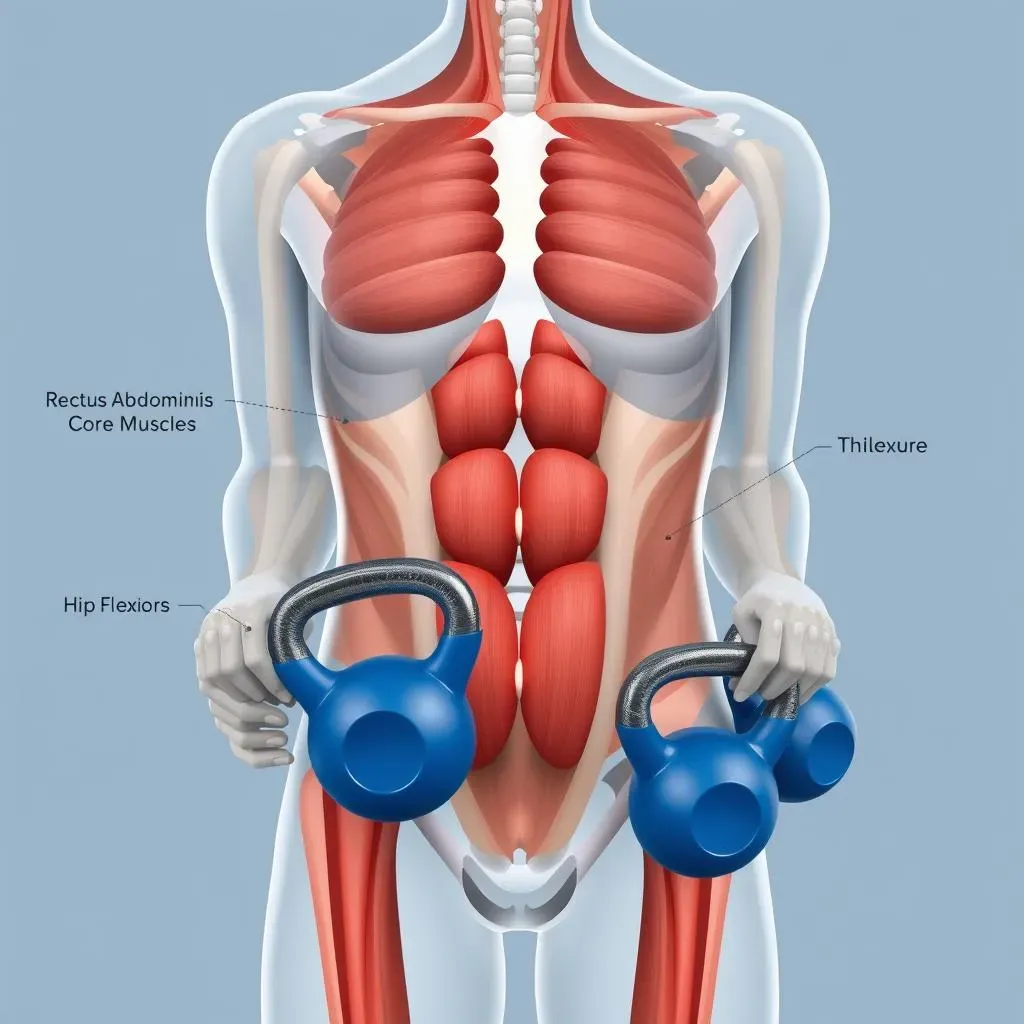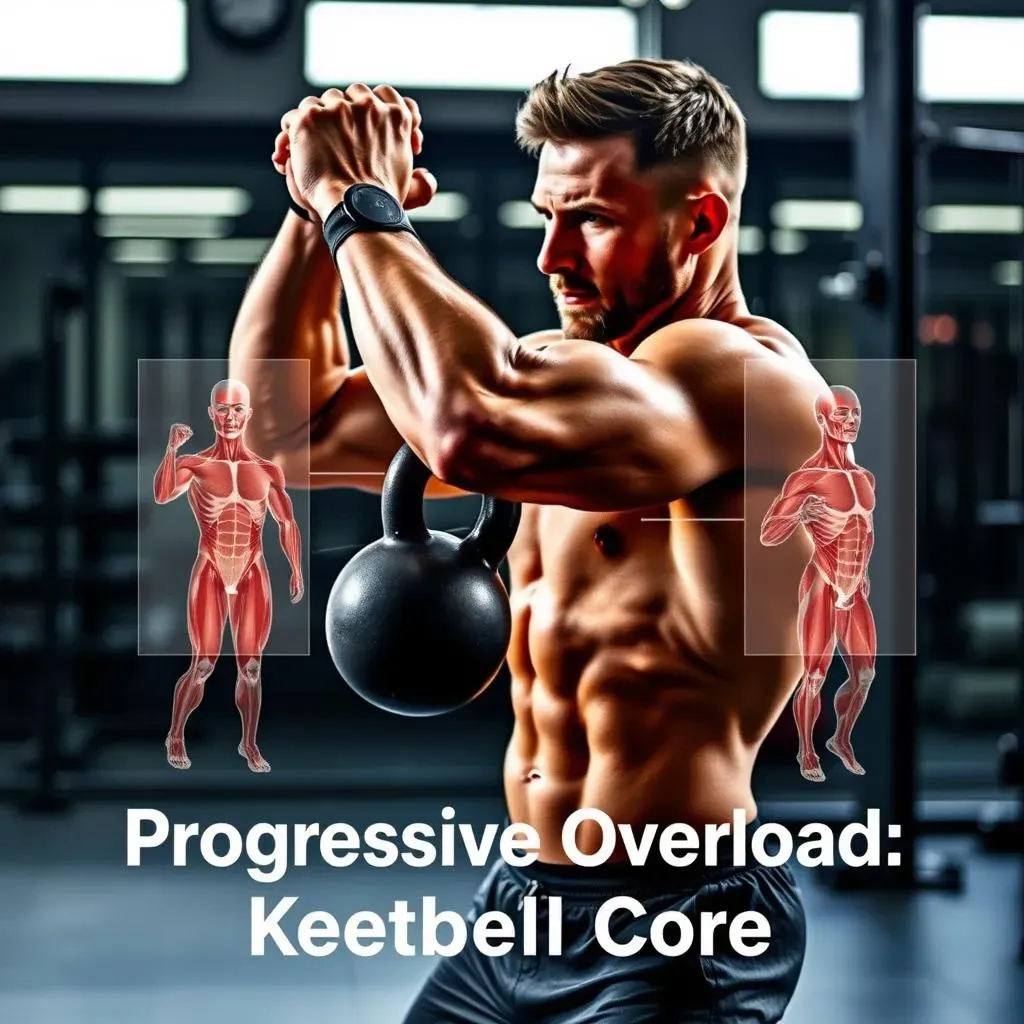Table of Contents
Looking to carve out a stronger core and unlock serious full-body power? Forget endless crunches – it's time to grab a kettlebell. Kettlebell core workouts are a game-changer, offering a dynamic and effective way to build not just visible abs, but also the deep, functional strength that supports everything you do. Unlike traditional exercises, kettlebells challenge your stability and engage a wider range of muscles, leading to better balance, coordination, and overall athleticism. This article dives into the 10 best kettlebell core exercises to help you build a rock-solid midsection. We'll break down the anatomy of your core, explore the unique benefits of kettlebell training, and provide a sample circuit to get you started. Whether you're a seasoned athlete or just beginning your fitness journey, these exercises will help you build a stronger, more stable core and take your training to the next level. So, let's swing into action and discover how kettlebell core workouts can transform your strength and physique!
Best Kettlebell Core Exercises for a Stronger Core

Best Kettlebell Core Exercises for a Stronger Core
The Kettlebell Turkish Get-Up: A Total Body Challenge
The Turkish Get-Up isn't just a core exercise; it's a full-body symphony that demands strength, coordination, and control. This move hits your core from every angle, forcing you to stabilize and engage your abs, obliques, and lower back with each transition. Think of it as a moving plank, challenging your core to maintain rigidity as you move from lying down to standing up, all while holding a kettlebell overhead. It's a true test of functional strength and a fantastic way to build a resilient core.
But the benefits don't stop there. The Get-Up also improves shoulder stability, hip mobility, and overall body awareness. Each step requires focus and precision, making it a great exercise for enhancing mind-muscle connection and improving your movement patterns. Don't be intimidated if it seems complex at first; start with a light weight (or even just your bodyweight) and gradually increase the load as you become more proficient. Trust me, mastering the Turkish Get-Up is worth the effort – it's a cornerstone exercise for building a strong and functional core.
Double Kettlebell Squat: Core Stability Under Load
Squats are already a killer leg exercise, but adding a double kettlebell front rack takes things to a whole new level for your core. Holding two kettlebells in front of your chest forces your core to work overtime to maintain an upright posture and prevent you from collapsing forward. This anti-flexion challenge is crucial for building a strong and stable spine, which translates to better performance in other lifts and reduced risk of injury.
The Double Kettlebell Squat is more than just a core exercise; it's a full-body strength builder that improves your squat mechanics, enhances your balance, and increases your overall power. By forcing your core to engage throughout the movement, you'll develop a stronger mind-muscle connection and learn to move more efficiently. Start with a weight you can comfortably manage and focus on maintaining a tight core and a neutral spine throughout the entire squat. As you get stronger, gradually increase the weight to continue challenging your core and building a bulletproof foundation.
Anatomy of the Core: Muscles Worked in Kettlebell Workouts

Anatomy of the Core: Muscles Worked in Kettlebell Workouts
Alright, let's dive into the nitty-gritty of what makes up your core. It's way more than just your "six-pack" muscles. When we talk about core strength, especially in the context of kettlebell exercises, we're talking about a whole team of muscles working together to stabilize your spine, transfer power, and keep you balanced. Think of it like the foundation of a building – if it's weak, the whole structure is at risk. So, understanding the roles of these key players is essential for maximizing your kettlebell core workouts and preventing injuries. We'll break down the main muscle groups and how they're engaged during various kettlebell movements.
Muscle Group | Function | Kettlebell Exercise Example |
|---|---|---|
Rectus Abdominis | Flexion of the spine (think: crunching) | Unilateral Kettlebell Sit-Up |
Obliques (Internal & External) | Rotation and lateral flexion of the spine | Kettlebell Windmill |
Transverse Abdominis | Deep core stabilization, abdominal compression | All kettlebell exercises (maintaining a tight core) |
Hip Flexors (Iliopsoas, Rectus Femoris) | Hip flexion (lifting your leg) | Turkish Get-Up (leg sweeps and transitions) |
Why Kettlebell Core Workouts? Benefits for Strength and Stability

Why Kettlebell Core Workouts? Benefits for Strength and Stability
So, why ditch the crunches and embrace kettlebells for your core? The answer is simple: kettlebells offer a unique blend of stability challenge, dynamic movement, and weighted resistance that traditional core exercises just can't match. Think about it – when you're doing a plank, you're holding a static position. But with kettlebells, you're constantly battling to control the weight as it swings, shifts, and pulls you in different directions. This constant fight for stability lights up your stabilizer muscles like crazy, leading to a stronger, more resilient core that can handle anything life throws your way. Plus, the added weight allows you to progressively overload your core, just like you would with any other muscle group, leading to more muscle growth and strength gains.
Sample Kettlebell Circuit for Core Strength and Total Body Fitness

Sample Kettlebell Circuit for Core Strength and Total Body Fitness
Ready to put it all together? This sample kettlebell circuit is designed to challenge your core from every angle, while also providing a full-body workout that will leave you feeling strong and energized. Remember to focus on proper form and control throughout each exercise, and don't be afraid to modify the movements to fit your current fitness level. This circuit is all about quality over quantity, so prioritize engaging your core and maintaining good posture over rushing through the reps. Aim to complete 3-4 rounds of this circuit, resting for 60-90 seconds between rounds. As you get stronger, you can increase the weight, reps, or rounds to continue challenging yourself.
Exercise | Reps | Sets | Rest |
|---|---|---|---|
Kettlebell Turkish Get-Up | 1-2 per side | 3-4 | 60-90 seconds |
Double Kettlebell Front Squat | 8-12 | 3-4 | 60-90 seconds |
Single-Arm Kettlebell Swing | 10-15 per side | 3-4 | 60-90 seconds |
Kettlebell Windmill | 5-8 per side | 3-4 | 60-90 seconds |
Single-Arm Kettlebell Suitcase Carry | 30-60 seconds per side | 3-4 | 60-90 seconds |
Progressive Overload in Kettlebell Core Workouts: Build a Stronger Core

Progressive Overload in Kettlebell Core Workouts: Build a Stronger Core
Gradually Increase the Weight
Progressive overload is the name of the game when it comes to building a stronger core with kettlebells. It's all about gradually increasing the demands on your muscles over time, forcing them to adapt and grow stronger. The most obvious way to do this with kettlebells is to simply increase the weight you're using. If you've been crushing your kettlebell swings with a 16kg bell, it might be time to bump it up to 20kg. This forces your core to work harder to stabilize and control the heavier load, leading to greater strength gains. But remember, form is king! Don't sacrifice proper technique for the sake of lifting heavier; it's better to use a lighter weight with perfect form than to risk injury with a weight that's too heavy.
Increase Reps and Sets
Another effective way to implement progressive overload is to increase the number of reps or sets you're performing. If you've been doing 3 sets of 10 reps of kettlebell windmills, try bumping it up to 4 sets of 12 reps. This increases the overall volume of work your core is doing, leading to greater muscle endurance and hypertrophy. You can also play around with different rep ranges to target different aspects of core strength. Lower reps (5-8) with heavier weight are great for building maximal strength, while higher reps (15-20) with lighter weight are better for building muscle endurance. Experiment and find what works best for you.
Don't just blindly add reps and sets without a plan. Track your workouts and make small, incremental increases each week. This will help you avoid overtraining and ensure that you're consistently challenging your core without pushing it too far, too fast. Listen to your body and take rest days when you need them. Remember, consistency is key to long-term progress.
Overload Method | Description | Benefits |
|---|---|---|
Increase Weight | Use a heavier kettlebell | Builds maximal strength |
Increase Reps | Perform more repetitions per set | Increases muscle endurance |
Increase Sets | Perform more sets of each exercise | Increases overall training volume |
Decrease Rest | Shorten rest periods between sets | Enhances cardiovascular fitness and muscular endurance |
Decrease Rest Time
While increasing weight, reps, and sets are the most common ways to implement progressive overload, you can also challenge your core by decreasing the amount of rest you take between sets. By shortening your rest periods, you force your core to work harder to recover, which can lead to improved muscular endurance and cardiovascular fitness. This method is particularly effective for building a "workhorse" core that can handle high-intensity activities and prolonged exertion. Start by gradually reducing your rest periods by 15-30 seconds each week, and see how your core responds. Just be careful not to sacrifice form for the sake of reducing rest time; it's always better to maintain proper technique, even if it means taking slightly longer breaks.
Elevate Your Core Strength with Kettlebell Core Workouts
Incorporating kettlebell core workouts into your fitness routine is more than just a path to sculpted abs; it's a commitment to building functional strength, improving stability, and enhancing overall athletic performance. By understanding the anatomy of your core and mastering these ten key exercises, you're equipped to challenge your body in new and dynamic ways. Remember, consistency and progressive overload are key to seeing real results. So, pick up that kettlebell, embrace the challenge, and unlock the power of a truly strong core.